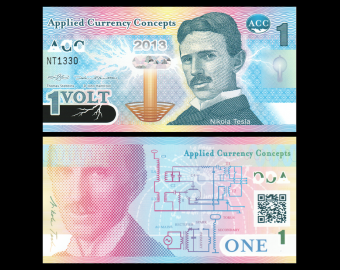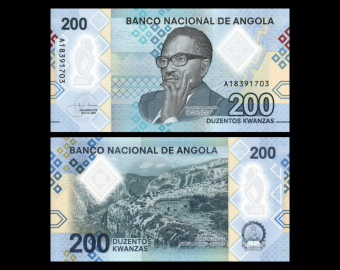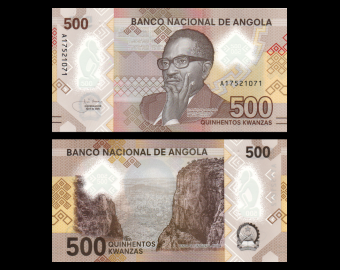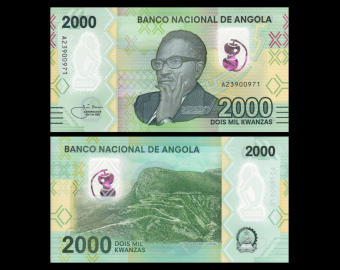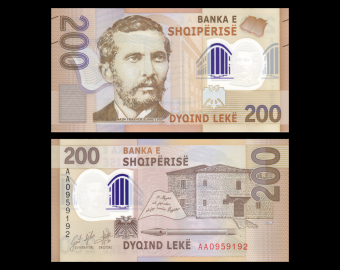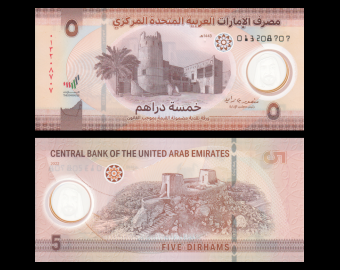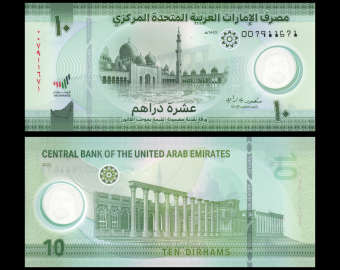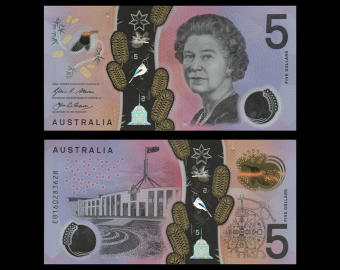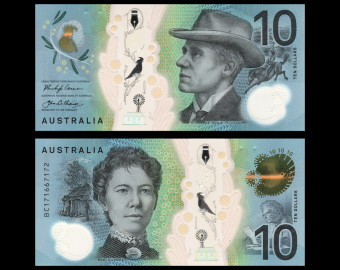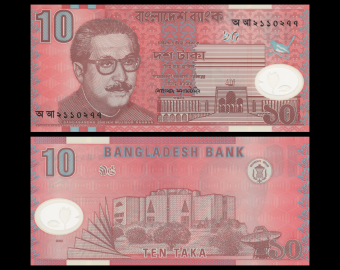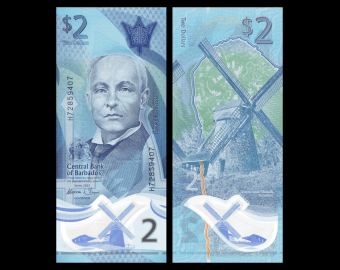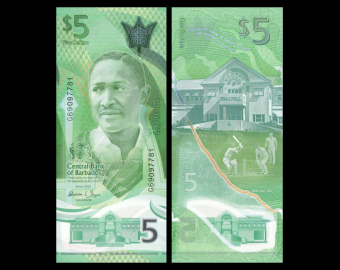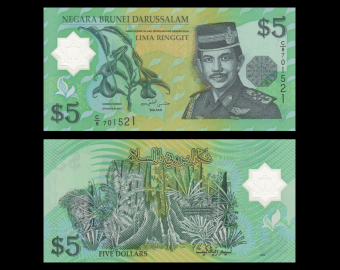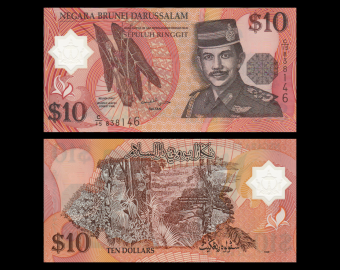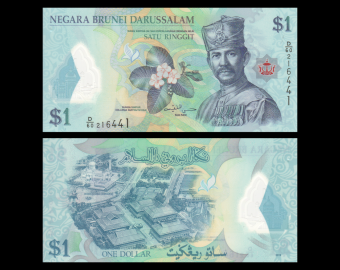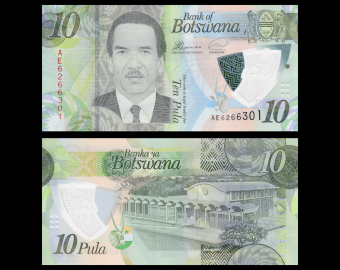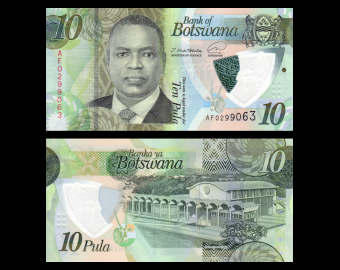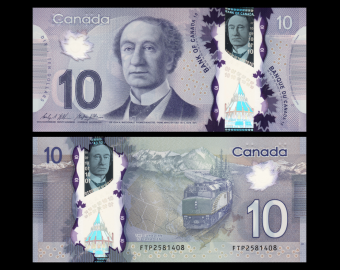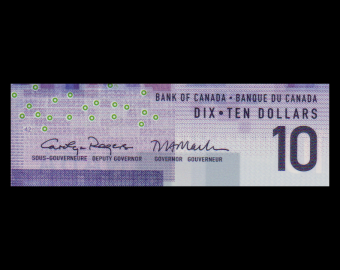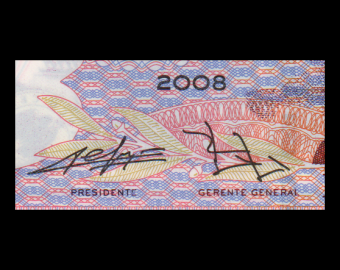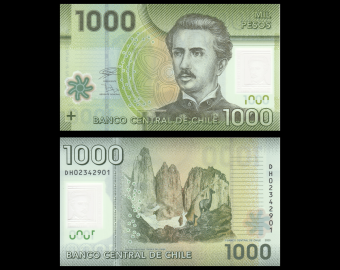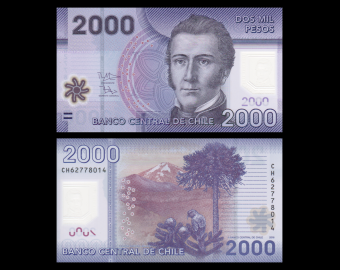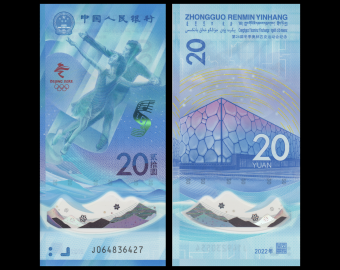No products
Catalog
Polymer banknotes There are 117 products.
Polymer banknotes are banknotes made from a polymer such as biaxially oriented polypropylene (BOPP). Such notes incorporate many security features not available in paper banknotes, including the use of metameric inks. Polymer banknotes last significantly longer than paper notes, causing a decrease in environmental impact and a reduced cost of pr...
Polymer banknotes are banknotes made from a polymer such as biaxially oriented polypropylene (BOPP). Such notes incorporate many security features not available in paper banknotes, including the use of metameric inks. Polymer banknotes last significantly longer than paper notes, causing a decrease in environmental impact and a reduced cost of production and replacement. Modern polymer banknotes were first developed by the Reserve Bank of Australia (RBA), Commonwealth Scientific and Industrial Research Organisation (CSIRO) and The University of Melbourne. They were first issued as currency in Australia during 1988 (coinciding with Australia's bicentennial year). In 1996 Australia switched completely to polymer banknotes. Other countries that have switched completely to polymer banknotes include; Brunei, Malaysia, Canada, New Zealand, Papua New Guinea, Romania and Vietnam. The latest countries to introduce polymer banknotes into general circulation include: the United Kingdom, Nigeria, Cape Verde, Chile, The Gambia, Nicaragua, Trinidad and Tobago, Mexico, Maldives, Mauritania, Botswana, São Tomé and Príncipe, Macedonia and the Russian Federation.
➠
Polymer banknotes are banknotes made from a polymer such as biaxially oriented polypropylene (BOPP). Such notes incorporate many security features not available in paper banknotes, including the use of metameric inks. Polymer banknotes last significantly longer than paper notes, causing a decrease in environmental impact and a reduced cost of pr...
Polymer banknotes are banknotes made from a polymer such as biaxially oriented polypropylene (BOPP). Such notes incorporate many security features not available in paper banknotes, including the use of metameric inks. Polymer banknotes last significantly longer than paper notes, causing a decrease in environmental impact and a reduced cost of production and replacement. Modern polymer banknotes were first developed by the Reserve Bank of Australia (RBA), Commonwealth Scientific and Industrial Research Organisation (CSIRO) and The University of Melbourne. They were first issued as currency in Australia during 1988 (coinciding with Australia's bicentennial year). In 1996 Australia switched completely to polymer banknotes. Other countries that have switched completely to polymer banknotes include; Brunei, Malaysia, Canada, New Zealand, Papua New Guinea, Romania and Vietnam. The latest countries to introduce polymer banknotes into general circulation include: the United Kingdom, Nigeria, Cape Verde, Chile, The Gambia, Nicaragua, Trinidad and Tobago, Mexico, Maldives, Mauritania, Botswana, São Tomé and Príncipe, Macedonia and the Russian Federation.
-
Applied Currency Concepts, 1 volt, 2013,...
Applied Currency Concepts 1 volt pick № : Non legal, polymer qual : Neuf / UNC date : 2013 this is not a banknole
4,75 €Sold ! -
Angola, P-160, 200 kwanzas, 2020, polymer
Angola 200 kwanzas pick № : P-160, polymer qual : Neuf / UNC date : 04.2020 Banco Nacional de Angola
3,90 €Available -
Angola, P-161, 500 kwanzas, 2020, polymer
Angola 500 kwanzas pick № : P-161, polymer qual : Neuf / UNC date : 04.2020 Banco Nacional de Angola
7,15 €Available -
Angola, P-162, 1 000 kwanzas, 2020, polymer
Angola 1 000 kwanzas pick № : P-162, polymer qual : Neuf / UNC date : 04.2020 Banco Nacional de Angola
11,95 €Available -
Angola, P-w163, 2 000 kwanzas, 2020, polymer
Angola 2 000 kwanzas pick № : P-w163, polymer qual : Neuf / UNC date : 04.2020 Banco Nacional de Angola
14,55 €Available -
Albania, P-w76, 200 leke, 2017
Albania 200 leke pick № : P-w76 qual : Neuf / UNC date : 2017 Banka e Shqiperise
6,90 €Sold ! -
United Arab Emirates, P-36a, 5 dirhams,...
United Arab Emirates 5 dirhams pick № : P-36 qual : Neuf / UNC date : 2022 Central Bank Of The United Arab Emirates
6,30 €Sold ! -
United Arab Emirates, P-37, 10 dirhams,...
United Arab Emirates 10 dirhams pick № : P-37 qual : Neuf / UNC date : 2022 Central Bank Of The United Arab Emirates
11,00 €Available -
Australia, P-62a, 5 dollars, 2016, polymer
Australia 5 dollars pick № : P-62a, polymer qual : Neuf / UNC date : 2016 Reserve Bank of Australia
13,50 €Sold ! -
Australia, P-63, 10 dollars, 2017, polymer
Australia 10 dollars pick № : P-63, polymer qual : Neuf / UNC date : 2017 Reserve Bank of Australia the first two numbers of the serial # give the last two numbers of the Year of issue
16,60 €Available -
Bangladesh, P-35, 10 taka, 2000, polymer
Bangladesh 10 taka pick № : P-35, polymer qual : Neuf / UNC date : 2000 Bangladesh Bank
3,20 €Available -
Barbados, P-w80, 2 dollars, polymer, 2022
Barbados 2 dollars pick № : P-w80, polymer qual : Neuf / UNC date : 2022 Central Bank of Barbados
5,95 €Available -
Barbados, P-w81, 5 dollars, polymer, 2022
Barbados 5 dollars pick № : P-w81, polymer qual : Neuf / UNC date : 2022 Central Bank of Barbados
11,85 €Sold ! -
Brunei Darussalam, P-23b, 5 ringgit,...
Brunei Darussalam 5 ringgit pick № : P-23b, polymer qual : Neuf / UNC date : 2002 Negara Brunei Darussalam
18,20 €Available -
Brunei Darussalam, P-24b, 10 ringgit,...
Brunei Darussalam 10 ringgit pick № : P-24b, polymer qual : Neuf / UNC date : 1998 Negara Brunei Darussalam
33,50 €Available -
Brunei Darussalam, P-35d, 1 ringgit,...
Brunei Darussalam 1 ringgit pick № : P-35d, polymer qual : Neuf / UNC date : 2019 Negara Brunei Darussalam
4,00 €Available -
Botswana, P-35a, 10 pula, 2018, polymer
Botswana 10 pula pick № : P-35a, banknote qual : Neuf / UNC date : 2018 Bank of Botswana, Banka ya Botswana
5,25 €Sold ! -
Botswana, P-w36b, 10 pula, 2020, polymer
Botswana 10 pula pick № : P-w36b, banknote qual : Neuf / UNC date : 2020 Bank of Botswana, Banka ya Botswanaprinter: Oberthur Fiduciaire
5,20 €Available -
Canada, P-107c, 10 dollars, 2013, polymer
Canada 10 dollars pick № : P-107c qual : Neuf / UNC, polymer date : 2013 Bank of Canada / Banque du Canada
19,90 €Sold ! -
Canada, P-w113c, 10 dollars, 2018, polymer
Canada 10 dollars pick № : P-w113c, polymer qual : Neuf / UNC date : 2018 Bank of Canada
17,90 €Available -
Chile, P-160c, 2 000 pesos, 2008, polymer
Chile 2 000 pesos pick № : P-160c, polymer qual : Neuf / UNC date : 2008 Banco Central de Chile
17,60 €Available -
Chile, P-161k, 1 000 pesos, 2020, polymer
Chile 1.000 pesos pick № : P-161k, polymer qual : Neuf / UNC date : 2020 Banco Central de Chile
5,90 €Available -
Chile, P-162f, 2 000 pesos, 2016, polymer
Chile 2 000 pesos pick № : P-162f, polymer qual : Neuf / UNC date : 2016 Banco Central de Chile
9,95 €Available -
China, P-919, 20 yuan, 2022, polymer
China 20 yuan pick № : P-919, polymer qual : Neuf / UNC date : 2022 Zhongguo Renmin Yinhang
9,25 €Available


